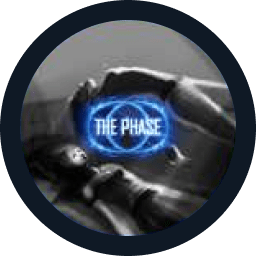Many people who have experienced the sensations and emotions of a lucid dream eventually develop the desire to repeat the experience. However, just one or two moments of lucidity during sleep may not be enough to fully control your dreams. Fortunately, there’s now a wealth of information available about people who regularly and purposefully practice lucid dreaming. Additionally, there are many materials on how to learn how to lucid dream quickly and effectively.
For those who prefer self-learning through video lessons, there is a free nine-hour course by Michael Raduga called “Complete Course on Lucid Dreaming from Beginner to Expert.” You can also learn how to lucid dream quickly and control your dreams through his books and articles.
Preparation
For beginners, it is crucial to create comfortable sleep conditions and remove distractions. Even for experienced lucid dreamers, an uncomfortable sleeping environment or physical and auditory disturbances can become insurmountable obstacles. Therefore, creating optimal conditions is essential. It’s also advised to avoid stress and eating heavily before sleep. For more details on sleep preparation, refer to the article “Conditions for Entering Lucid Dreams.”
Action Plan
To successfully achieve any goal, it is crucial to create a plan of action. When it comes to lucid dreaming, having a well-formulated and memorized plan is half the battle. Planning goes beyond the actions you plan to take within the lucid dream and includes your behavior in the day(s) leading up to the lucid dream. Planning ahead can help you learn how to lucid dream quickly, especially when combined with consistent practice. For more information, see the article “Recommendations and Rules for Mastering Lucid Dreaming.”
Choosing a Technique
There are several ways to practice lucid dreaming and learn how to stay aware in a dream for longer periods. Michael Raduga’s books provide detailed descriptions of these methods.
In brief, there are three main methods for entering lucid dreams:
- The direct method, by which a person transitions directly from wakefulness into a lucid dream. This method is considered the most challenging way to enter a lucid dream, and beginners are advised against starting with it.
- The indirect method, by which a person enters a lucid dream upon awakening after sleeping. This method is considered the most accessible and easiest for beginners, making it a recommended starting point for those wanting to learn how to lucid dream quickly.
- Dream awareness, by which a person suddenly realizes that they are dreaming. As soon as the thought “Am I dreaming? This is a dream!” arises, an ordinary dream becomes lucid. The next steps in such a lucid dream depend on the individual’s desires and skill in controlling dreams.
When a person starts practicing both the direct and indirect methods, spontaneous lucidity during dreams may also occur.
General information on these techniques can be found in the article “Lucid Dreaming – Techniques for Practice.” More detailed methods of entering a lucid dream are described in “Ways to Enter a Lucid Dream – General Information.”
Auxiliary Tools
People are always searching for faster and more effective ways to achieve their goals, and lucid dreaming practices are no exception.
In the last century, various programs and special “sleep masks” have been developed and used to help people realize they are dreaming. These programs and devices primarily rely on audio and visual stimuli during sleep. For more details, check the article “Lucid Dreaming – Tools for Achieving Lucidity in Dreams.”
With all the available programs and devices, it’s important to remember that simply realizing you’re dreaming isn’t enough. You must also remember what to do next and maintain your lucidity long enough to complete your planned actions and achieve your desired results.
At first, the mere realization that you are lucid in a dream can provide such an emotional high that everything else seems unimportant. However, the more frequently a person enters a lucid dream according to their plan, the less intense this emotional reaction becomes. The desire to stay in this state longer to complete set goals increases, and this is where techniques come into play. These techniques are discussed in Michael Raduga’s book The Phase: Breaking the Illusion of Reality.
Final Thoughts
With a systematic and regular approach to training lucid dreaming, anyone can learn how to lucid dream quickly, stay aware in the dream world, and control themselves and the surrounding environment.
However, just like in any sport, one cannot ignore unexpected life situations and emotional experiences that can hinder the process of mastering lucid dreaming. In such cases, taking courses with Michael Raduga can help overcome obstacles and successfully practice lucid dreaming anytime, at will.
FAQ
Recommended reading
Are lucid dreams real and how to learn to be aware of them
Does lucid dreaming really exist?









